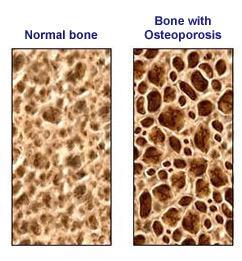 One of most painful episodes when Sophie was home was her outburst of: “how could you let me get so sick and get osteoporosis?”
One of most painful episodes when Sophie was home was her outburst of: “how could you let me get so sick and get osteoporosis?”
Really?
I had to really sit on that for a while so I didn’t have a comeback at her that would have hurt her. There is so much she simply doesn’t remember nor wants to. It’s like the worst months (years) happened to someone else and she has no ability to connect with the feelings and what really did happen.
The hardest part of being a parent or carer for someone with anorexia, is having to stand on the sidelines and helplessly watch as they destroy themselves. It is even harder when your loved one is in the age group where you cannot interfer until it is too late. Anyone who has cared for someone with anorexia know just how impossible it is to get them to eat, seek help, abide by medical suggestions and care. It.just.doesn’t.happen!!!
Then of course, the long term side effects that they are left with once in recovery or recovered. It’s a case of “follow this path then there will be consequences”. So many are left with painful regrets and health problems created by their time spent in anorexia (or other eating disorders). Considering the sufferer is not responsible for causing or choosing the illness, nor are they able to respond to treatment or seek help for a long time. So it is pretty tough, when knowing you weren’t responsible for the illness, but have all the consequences of self-inflected ongoing health problems, is a bizzare place to be. It’s a cry for “not fair” but the reality is, you and you alone have to live with the consequences and try to do something about your long term health if you can.
Sophie with her osteoporosis and osteopenia is in the same position. She wants to lash out and blame someone else and be the responsibility holder. She is actually blessed in that having recovered so well so far, she still has at least 6-7 years of bone density building before her body stops doing this. She can effectively recover most of her bone damage. Others are not so blessed. Teeth, bones, endocrin system, etc can be like this forever.
After taking several breaths and some ‘out-of-house’ time, I sat her down and talked. I explained just how impossible it was to get her to eat. That we had her at the doctors within 3 months of her starting her ‘healthy’ diet. That she had ongoing weekly care from that point, and NO ONE could get her to change the path she was on. After a few days, she did come back and apologize. She still gets herself in a knot about things, still gets fears, anxieties and OCD moments about the past and the future. It is still a learning curve and learning to live and blend past, present and future.
I found this great article below about osteoporosis from ED Hope which is worth putting at the bottom of this post. It is a very clear reminder of the hidden damage that is done but also what can be done about it.
————————————–
When we think of the medical stabilization of patients with eating disorders, we tend to focus on the immediate pressing concerns:
- Abnormal cardiac function from blood chemistry imbalances that can lead to sudden death
- Gastro-intestinal bleeds from repeated vomiting
- Seizures from low blood sugar
- Other physical health concerns
Once we stabilize the malnourished patient, we need to address long-term consequences of the eating disorder that may lead to dire consequences if unaddressed.
This is particularly true for severe bone loss known as osteopenia in its earlier, less severe stage, and osteoporosis in its later more critical stage.
The Dangers of Osteoporosis
Osteoporosis is a silent, but extremely, disabling, painful condition, involving severe bone loss that can lead to:
- Disability
- Chronic pain
- Loss of stature
- Bone fractures
It is a significant health concern for 44 million Americans, and 70% of those at risk are women. Most people think of osteoporosis as a condition of the elderly. It tends to be ignored as a potential problem in patients with anorexia or bulimia nervosa, most of whom developed their disorder in their teens or early twenties.
This is a mistake. Even if they are in recovery, they are at a greater risk of suffering osteoporosis that in many cases could have been avoided or minimized with preventative treatment.
How Eating Disorders and Bone Loss Are Related
Women with eating disorders, particularly Anorexia Nervosa, are at high risk for osteoporosis. About three quarters of women who meet the criteria for anorexia nervosa (those who are 85% or less of their ideal body weight), show some evidence of bone mineral deficiency.
Rest of post from ED Hope
